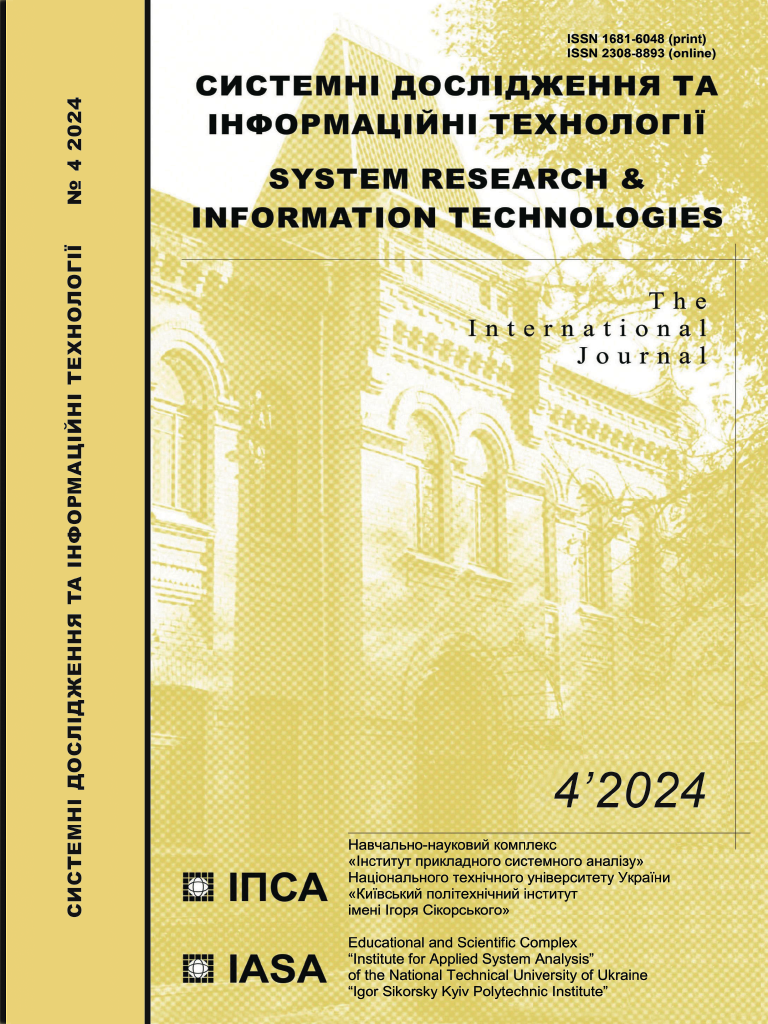Application of neural network technology for public opinion analysis
DOI:
https://doi.org/10.20535/SRIT.2308-8893.2024.4.08Keywords:
public opinion, neural networks, natural language processing, large language models, social networks, classificationAbstract
The research is devoted to studying and using neural network technologies, in particular algorithms and methods of natural language processing, to increase the efficiency of studying and analyzing public opinion of Ukraine’s partner countries regarding the war in Ukraine. The research involved analyzing and processing databases consisting of messages about the war in Ukraine on the social network Twitter. The resulting datasets were used to train several neural network models. The best classification results were obtained with the GPT-3.5-turbo model. For a deeper understanding of the results of the public opinion analysis, we created their visualization. The results of the study have shown the high efficiency of the selected solutions. They may be of great practical importance for improving methods of analyzing public opinion and making informed decisions based on a deep understanding of global feedback.
References
C. Bergstrom, J. West, Calling Bullshit: The Art of Skepticism in a Data-Driven World. Random House, 2020, 336 p.
Ł. Wordliczek, “Neural Networks and Political Science: Testing the Methodological Frontiers,” Revista de Metodología de Ciencias Sociales, no. 57, pp. 37–62, 2023. Accessed on: January 3, 2024. [Online]. Available: https://revistas.uned.es/index.php/empiria/article/view/36429/27239
M. Gong, “Analysis of Internet Public Opinion Popularity Trend Based on a Deep Neural Network,” Computational Intelligence and Neuroscience, vol. 2022, article ID 9034773, 2022, 11 p. Accessed on: January 3, 2024. [Online]. Available: https://www.hindawi.com/journals/cin/2022/9034773/
S. Yang, “Analysis of Network Public Opinion in New Media Based on BP Neural Network Algorithm,” Mobile Information Systems, vol. 2022, article ID 3202099, 2022, 9 p. Accessed on: January 3, 2024. [Online]. Available: https://www.hindawi.com/journals/misy/2022/3202099/
X. Chen, S. Duan, S. Li, et al., “A method of network public opinion prediction based on the model of grey forecasting and hybrid fuzzy neural network,” Neural Comput & Applic, vol. 35, pp. 24681–24700, 2023. doi: https://doi.org/10.1007/s00521-023-08205-9
Y. Parzhin, V. Kosenko, A. Podorozhniak, et al., “Detector neural network vs connectionist ANNs,” Neurocomputing, Elsevier, vol. 414, pp. 191–203, 2020. doi: 10.1016/j.neucom.2020.07.025
R. Kysliy, “Artificial intelligence in natural language: language models, low-resource languages and dehumanization in texts,” Forum of GlobalLogic company, 2023. Accessed on: January 3, 2024. [Online]. Available: https://dou.ua/forums/topic/45583/
OpenAI: Home page of the openAI platform. 2023. Accessed on: January 3, 2024. [Online]. Available: https://platform.openai.com/overview
A. Amri, “OpenAI GPT For Python Developers: The art and science of developing intelligent apps with OpenAI GPT-3, DALL·E 2, CLIP, and Whisper - Suitable for learners of all levels,” Leanpub, 2023, 236 p. Accessed on: January 3, 2024. [Online]. Available: https://leanpub.com/openaigptforpythondevelopers/
L. Tunstall, L. Werra, and T. Wolf, Natural Language Processing with Transformers: Building Language Applications with Hugging Face. O’Reilly Media, Inc., 2022, 406 p.
S. Hakimov, G. Cheema, Unveiling Global Narratives: A Multilingual Twitter Dataset of News Media on the Russo-Ukrainian Conflict. 2023. Accessed on: January 3, 2024. [Online]. Available: https://arxiv.org/pdf/2306.12886.pdf
“Ukraine Conflict Twitter Dataset,” Kaggle, 2023. Accessed on: January 3, 2024. [Online]. Available: https://www.kaggle.com/datasets/bwandowando/ukraine-russian-crisis-twitter-dataset-1-2-m-rows/data
Y. Liu, M. Ott, N. Goyal, et al., “RoBERTa: A Robustly Optimized BERT Pretraining Approach,” The Hugging Face Community. Accessed on: January 3, 2024. [Online]. Available: https://huggingface.co/docs/transformers/model_doc/roberta
K. Perevoznyk, “Social Sentiment Analysis,” GitHub, 2023. Accessed on: January 3, 2024. [Online]. Available: https://github.com/Kyrylopara/Social-Sentiment-Analysis

